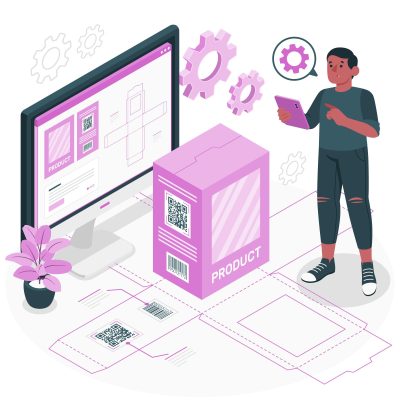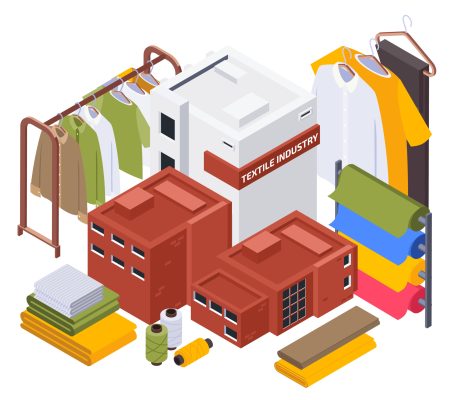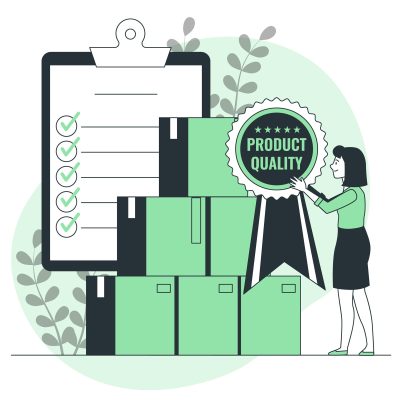10 Ways Apparel Management Software Transforms Operations
The apparel industry is complex with numerous interconnected processes, including production planning, inventory management, sales tracking, and supply chain coordination. Efficiently managing these operations is crucial and with the right tools, like a tailored apparel management software businesses can streamline workflows, cut costs, and boost overall productivity by as much as 20–30%.
By integrating key functions such as order processing, inventory tracking, and customer management, an apparel software provides real-time data and automation. As a result, apparel companies can respond faster to market demands, improve their decision-making, and maintain a competitive edge.
In this blog, we’ll explore the top 10 ways ERP for apparel how the best apparel software can transform day-to-day operations for business owners allowing them to stay ahead in the competitive market.
10 Ways Apparel Management Software Transforms Operations
Apparel management in the textile Industry involves a lot of operations and procedures. To maintain the quality and efficiency of all these processes on a larger scale, adopting apparel management solutions is must.
An apparel management software’s main function is to increase the visibility, efficiency, quality, and accuracy of all the operations in the whole production chain. So, let’s look at the top 10 ways the best apparel management software transforms all these operations:

1] AI-Driven Production Planning: The production process in the apparel industry involves intricate planning, from fabric procurement to stitching and final assembly. Apparel management software with AI capabilities automates production scheduling, ensuring seamless workflows.
This reduces delays, eliminates manual errors, and maximizes machine uptime. For instance, AI tools can analyze production capacity, order priority, and timelines to automatically create the most efficient production schedules. Additionally, managers can visualize timelines, assign tasks, and monitor progress for each order in real time.
This not only improves communication among teams but also ensures timely order completion, reducing missed deadlines and improving customer satisfaction.

2] Seamless Order Processing: Processing orders manually often leads to errors in key details like fabric specifications, color codes, and quantities. The best apparel management software automates this process, ensuring accuracy and efficiency.
By integrating data entry, order tracking, and customer information, ERP for apparel minimizes human errors and accelerates the order fulfillment cycle. For example, manufacturers can use automation to validate order specifications against available inventory, ensuring immediate action is taken to procure missing materials.
This streamlined process reduces order turnaround times, boosts production efficiency, and results in higher customer satisfaction, ultimately increasing sales and revenue for the business.
3] Better Supplier Management: Supplier relationships play a crucial role in ensuring uninterrupted production. Apparel management software tracks supplier performance, lead times, order histories, and pricing trends, enabling businesses to make data-driven decisions.
For example, the software can provide insights into which suppliers deliver materials on time and which consistently cause delays. This allows manufacturers to optimize procurement strategies, negotiate better terms, and avoid production bottlenecks caused by late deliveries or inconsistent quality.
With better supplier management, businesses can ensure steady production, reduce costs, and maintain consistent product quality.
4] ESG Compliance and Sustainability: Sustainability is no longer optional; it’s a business imperative. Apparel software helps businesses monitor and improve their sustainability efforts by tracking key metrics like energy consumption, waste reduction, and ethical sourcing.
The software ensures compliance with labor laws, environmental standards, and customer expectations for sustainable practices. Additionally, real-time monitoring of energy use during production helps identify areas for improvement, reducing environmental impact.
By integrating ESG compliance into daily operations, apparel businesses can meet regulatory requirements, avoid legal complications, and build a strong reputation for sustainable practices.

5] Streamlined Financial Management: Managing finances in a vast industry like apparel can be challenging. The best apparel management software simplifies this by automating financial tasks such as expense tracking, budget forecasting, and profit analysis.
Instead of manually compiling financial data from various departments, the software consolidates this information into easy-to-read reports. For instance, businesses can generate real-time cash flow statements or analyze cost-per-unit production without any manual effort.
This allows managers to make quick, informed financial decisions, allocate resources efficiently, and maintain long-term financial stability.

6] Real-Time Data for Decision Making: In an industry driven by rapidly changing trends, timely and accurate data is critical. Apparel management software collects data from every aspect of operations—sales, inventory, production, and customer feedback—and presents it through user-friendly dashboards.
For example, sales trends can be analyzed to predict future demand, while production costs can be monitored to identify areas where efficiency can be improved. This real-time visibility empowers decision-makers to adapt quickly to market changes, capitalize on emerging trends, and mitigate risks effectively.
Access to actionable insights enhances strategic planning and fosters innovation, keeping businesses ahead of the competition.
7] Efficient Inventory Management: Inventory mismanagement can lead to overstocking or stockouts, both of which negatively impact the bottom line. Apparel management solutions provide real-time visibility into stock levels, enabling businesses to forecast demand accurately and plan procurement accordingly.
The software uses predictive analytics to ensure optimal inventory levels, sending alerts when stock runs low or when certain items are overstocked. For instance, manufacturers can set reorder points for high-demand materials, ensuring timely replenishment.
By maintaining leaner inventory aligned with production needs, businesses can reduce carrying costs, avoid wastage, and improve cash flow.
8] Increased Scalability: As apparel businesses grow, managing larger orders, more suppliers, and complex workflows becomes increasingly challenging. A robust ERP for apparel is designed to scale seamlessly with business expansion.
For example, an apparel management software can handle increased transaction volumes, integrate with new sales channels, and support additional product lines without compromising performance. This scalability allows businesses to expand operations while maintaining efficiency, ensuring they can meet growing customer demands and explore new market opportunities.
9] Improved Quality Control: Maintaining high quality standards is essential, especially for businesses dealing with intricate designs and large-scale orders. Apparel management software integrates quality control checks at every stage of production, from raw material inspection to the final product.
For example, the software can flag materials that don’t meet quality standards or identify defects during the production process. This proactive approach ensures consistency, reduces returns, and enhances customer trust in the brand.
By minimizing defects and maintaining high-quality output, businesses can build a reputation for excellence and stand out in the competitive market.

10] Improved Customer Satisfaction and Retention: With more customers expecting transparency and quick deliveries, apparel management software offers real-time updates on order status, shipping timelines, and inventory availability, creating a seamless customer experience.
For instance, customers can receive automated notifications about order progress, from production to delivery. This level of transparency builds trust and loyalty, encouraging repeat business.
By ensuring timely deliveries and clear communication, businesses can improve customer satisfaction, reduce churn, and foster long-term relationships.
The apparel industry demands efficiency, accuracy, and adaptability. Apparel management software addresses these needs by automating critical tasks, providing real-time insights, and integrating key operations into a unified platform.
From AI-driven production planning and streamlined order processing to better supplier management and enhanced quality control, these solutions empower businesses to thrive in a competitive landscape. By embracing ERP for apparel, companies can not only boost operational efficiency but also build stronger customer relationships and achieve sustainable growth.
Adopting the right software isn’t just a smart move; it’s a competitive necessity.

